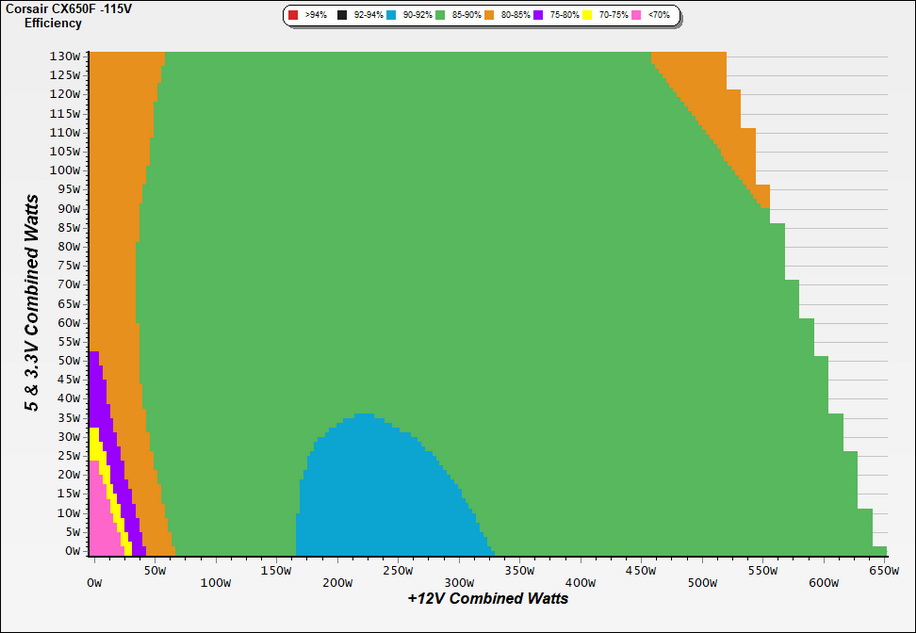Why you can trust Tom's Hardware
Protection Features
Check out our PSUs 101 article to learn more about PSU protection features.
| Protection Features | Row 0 - Cell 1 |
OCP | 12V: 63.4A (117.41%), 11.936V |
OPP | 833.41W (128.22%) |
OTP | ✓ (129°C @ 12V Heat Sink) |
SCP | 12V: ✓ |
PWR_OK | Accurate but lower than 16ms |
NLO | ✓ |
SIP | Surge: MOV |
The OCP triggering point at 12V is conservatively set and we agree with this. The minor rails are also within 140%. For the 5V rail which can take lots of stress if the system features lots of RGB lighting that doesn't use 12V, this is understandable. On the other hand, there is no reason to allow for such high amperage at 3.3V. Lastly, the over power protection is set within 130% of the PSU's max power, so it is correctly set.
DC Power Sequencing
According to Intel’s most recent Power Supply Design Guide (revision 1.4), the +12V and 5V outputs must be equal to or greater than the 3.3V rail at all times. Unfortunately, Intel doesn't mention why it is so important to always keep the 3.3V rail's voltage lower than the levels of the other two outputs.
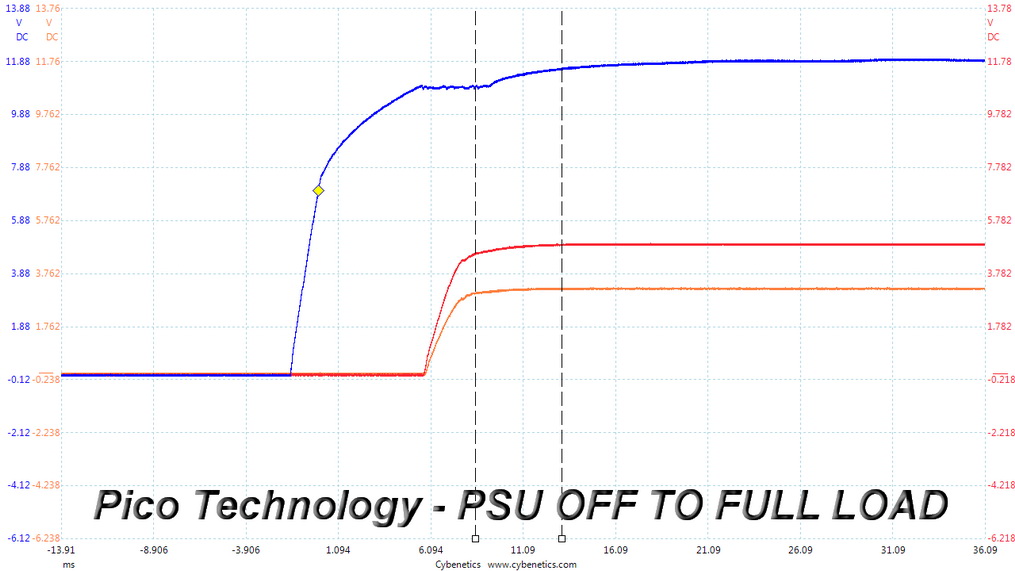
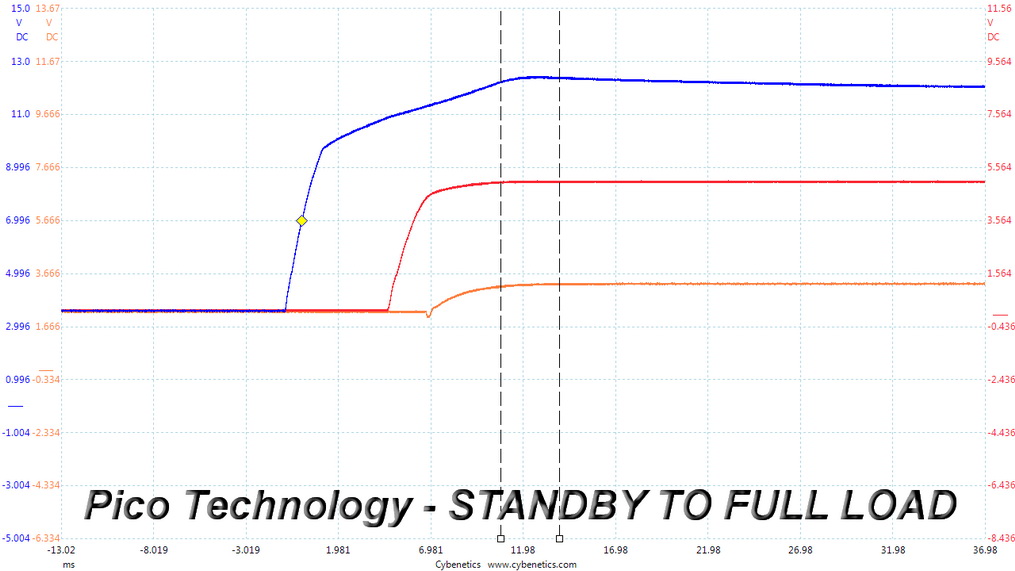
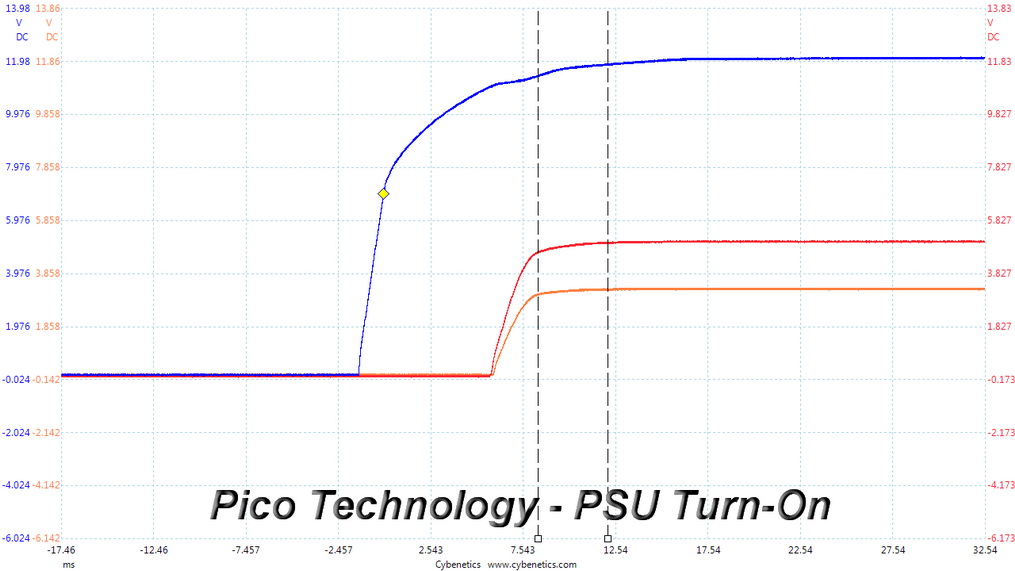
The 3.3V rail is lower than the other two in all cases, so there is no problem here.
Cross Load Tests
To generate the following charts, we set our loaders to auto mode through custom-made software before trying more than 25,000 possible load combinations with the +12V, 5V, and 3.3V rails. The deviations in each of the charts below are calculated by taking the nominal values of the rails (12V, 5V, and 3.3V) as point zero. The ambient temperature during testing was between 30 to 32 degrees Celsius (86 to 89.6 degrees Fahrenheit).
Load Regulation Charts

Load Regulation Charts
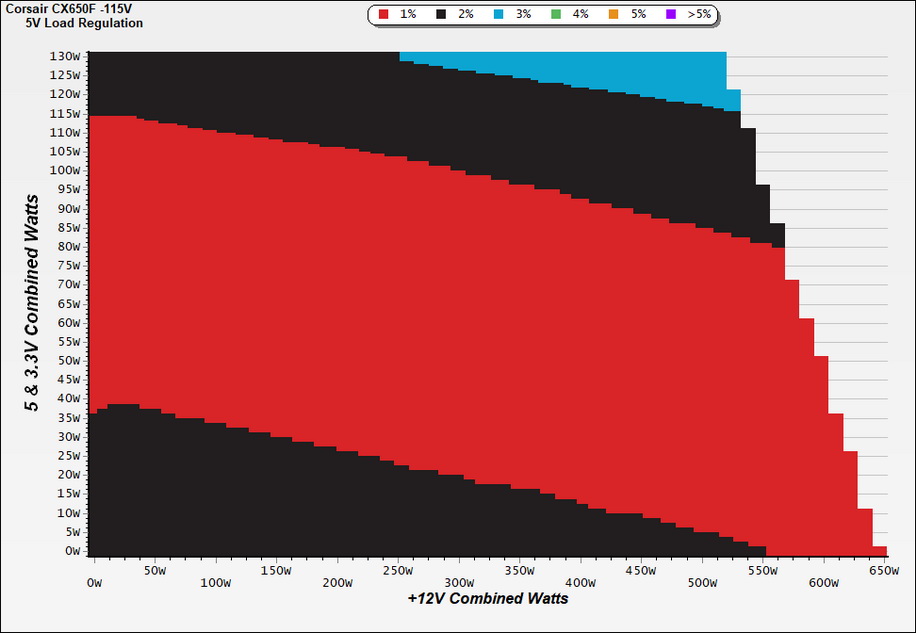
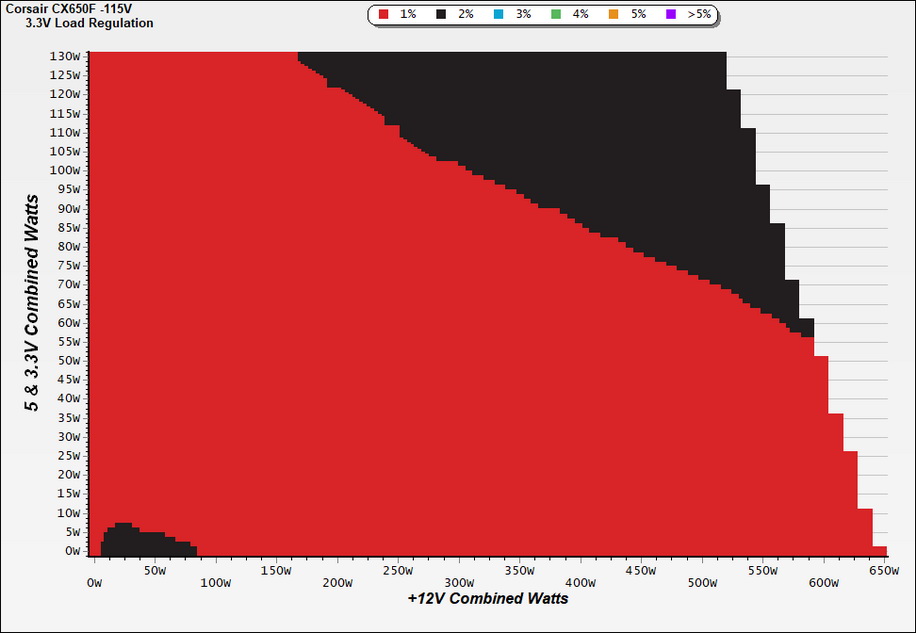
Efficiency Chart
Ripple Charts
The lower the power supply's ripple, the more stable the system will be and less stress will also be applied to its components.

Ripple Suppression Charts
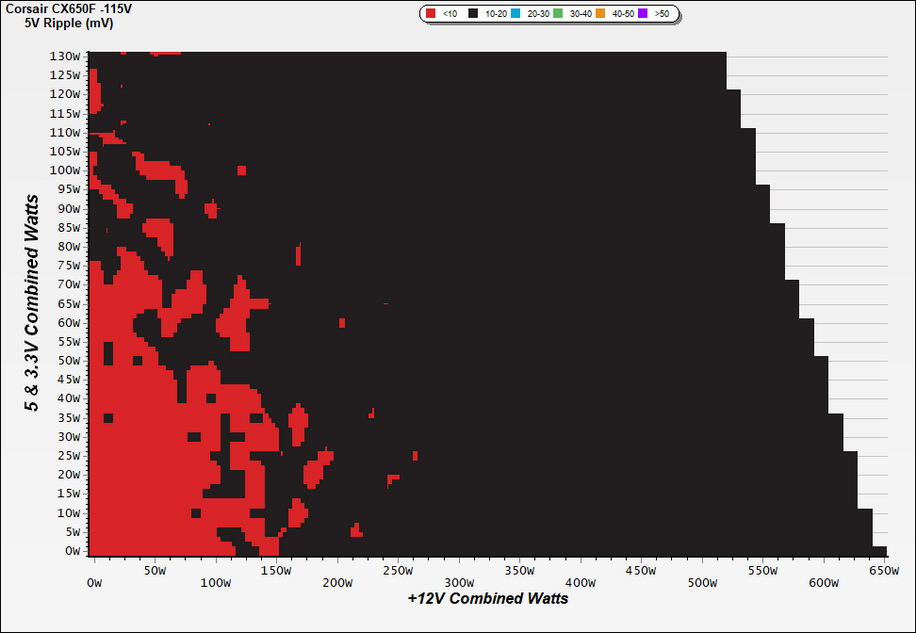
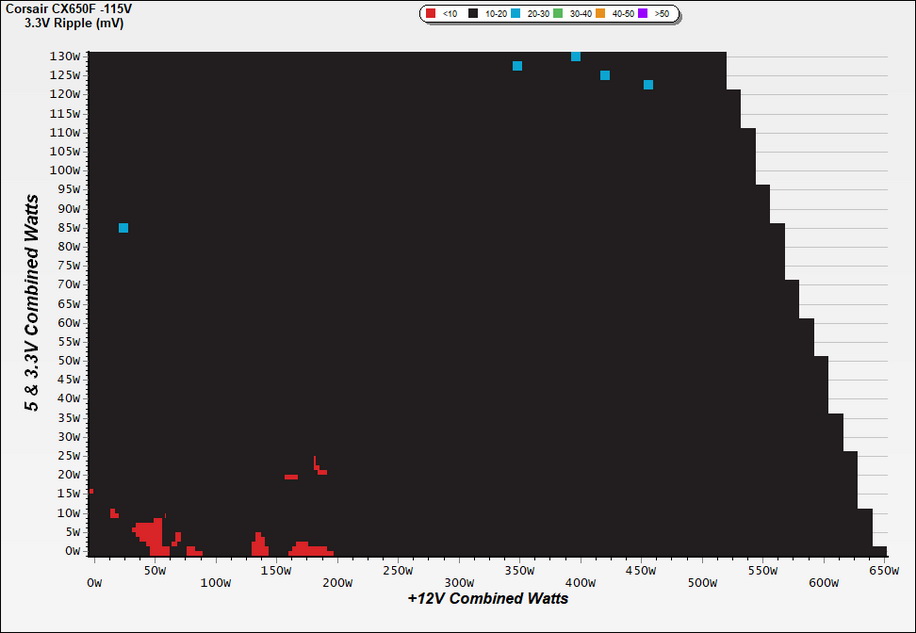

Infrared Images
We apply a half-load for 10 minutes with the PSU's top cover and cooling fan removed before taking photos with a modified FLIR E4 camera able to deliver an IR resolution of 320x240 (76,800 pixels).
Get Tom's Hardware's best news and in-depth reviews, straight to your inbox.
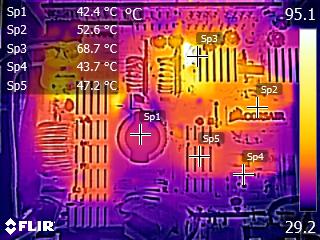
IR Images
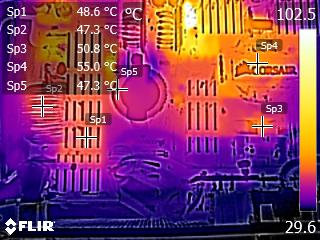
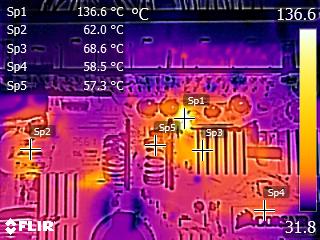


A coil, belong to a PI filter, right next to the -12V rectifier gets quite hot. This can be an issue since this coil is right next to the mainstream Teapo SC caps.
MORE: Best Power Supplies
MORE: How We Test Power Supplies
MORE: All Power Supply Content
Current page: Protection Features, DC Power Sequencing, Cross-Load Tests and Infrared Images
Prev Page Load Regulation, Hold-Up Time, Inrush & Leakage Current, Efficiency and Noise Next Page Transient Response Tests, Timing Tests, Ripple Measurements and EMC Pre-Compliance Testing
Aris Mpitziopoulos is a contributing editor at Tom's Hardware, covering PSUs.
